
Bloodwych is a dungeon role-playing video game, a dungeon crawler, developed for the Amiga, Atari ST, MS-DOS, Amstrad CPC, Commodore 64, and ZX Spectrum. Its box featured artwork by Chris Achilleos. The plotline identifies the player as a champion of Trazere who, after recruiting up to three fellow champions, travels through dungeons and mazes fighting creatures along the way to find and destroy the evil Zendick, and banish the Lord of Entropy.

Rick Dangerous is a platform game developed by Core Design for the Acorn Archimedes, Amiga, Atari ST, Amstrad CPC, ZX Spectrum, Commodore 64, and MS-DOS. The game was released in 1989 and published by MicroProse on the Firebird Software label in the UK, and on the MicroPlay label in America. It was also published in Spain by Erbe Software. Later, it was released with two other games, Stunt Car Racer and MicroProse Soccer, on the Commodore 64 Powerplay 64 cartridge. The game was followed by a sequel, Rick Dangerous 2, in 1990. Loosely based on the Indiana Jones film franchise, the game received mixed reviews from critics.
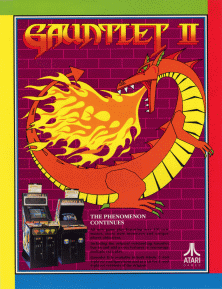
Gauntlet II is a 1986 arcade game produced by Atari Games that serves as the immediate sequel to the original Gauntlet, which was released the previous year. Like its predecessor, Gauntlet II is a fantasy-themed top down dungeon crawler game and was released as a dedicated cabinet, as well as a conversion kit, both available in 2-player and 4-player versions.

Mercenary is a 3D action-adventure game written for the Atari 8-bit computers and published by Novagen Software in 1985. It was converted to the Commodore 64, ZX Spectrum, Amstrad CPC, Atari ST, Amiga, and Commodore 16/116/Plus/4. The game uses vector graphics renderings of vast, sparse environments and has open-ended gameplay. It was also released as Mercenary: Escape from Targ and Mercenary: A Flight Simulator Adventure.

Stunt Car Racer is a racing video game developed by Geoff Crammond. It was published in 1989 by MicroProse, under their MicroStyle and MicroPlay labels in the United Kingdom and in the United States, respectively. The game pits two racers on an elevated track on which they race in a head-to-head competition, with ramps they must correctly drive off as the main obstacle.

Barbarian: The Ultimate Warrior is a 1987 video game developed and published by Palace Software for the Amstrad CPC, Commodore 64, and ZX Spectrum. The game was ported to many other systems and was licensed to Epyx who published it as Death Sword in the United States.

Chaos: The Battle of Wizards is a turn-based tactics video game released for the ZX Spectrum in 1985. It was written by Julian Gollop and originally published by Games Workshop. Based on Gollop's 1982 design for a board game / card game hybrid, Chaos received a positive reception and went on to influence various games, including Darwinia and King's Bounty, and spawned a sequel, Lords of Chaos, in 1990.

Laser Squad is a turn-based tactics video game, originally released for the ZX Spectrum and later for the Commodore 64, Amstrad CPC, MSX, Amiga, Sharp MZ-800 and Atari ST and PC computers between 1988 and 1992. It was designed by Julian Gollop and his team at Target Games and published by Blade Software, expanding on the ideas applied in their earlier Rebelstar series. Laser Squad originally came with five mission scenarios, with an expansion pack released for the 8-bit versions, containing a further two scenarios.
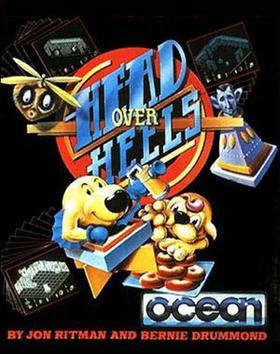
Head Over Heels is an action-adventure game published by Ocean Software in 1987 for several home computers. It uses an isometric engine similar to the Filmation technique first developed by Ultimate Play the Game. Head Over Heels is the second isometric game by Jon Ritman and Bernie Drummond, after their earlier Batman computer game was released in 1986. The game received favourable reviews and was described by Zzap!64 as an "all time classic".
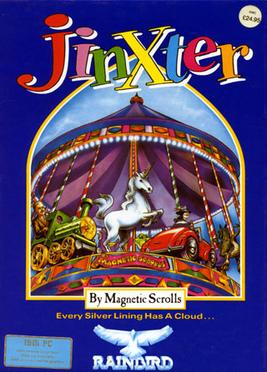
Jinxter is an interactive fiction video game developed by Magnetic Scrolls and published by Rainbird in 1987 for 8-bit and 16-bit home computers of the time. Jinxter tells the story of a man on a mission to save the fictional land of Aquitania from the looming threat of evil witches. The game was well received by critics upon its release.

Archon II: Adept is a strategy/action video game developed by Free Fall Associates: Jon Freeman, Paul Reiche III, and Anne Westfall. It was published in 1984 by Electronic Arts for the Atari 8-bit computers and Commodore 64. Ports followed for the Apple II, Amstrad CPC,ZX Spectrum, and Amiga.
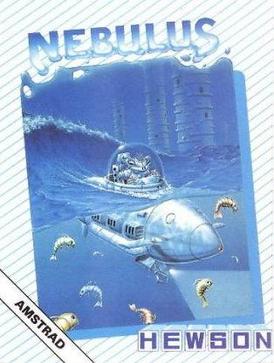
Nebulus is a platform game created by John M. Phillips and published by Hewson Consultants in the late 1980s for home computer systems. International releases and ports were known by various other names: Castelian, Kyorochan Land, Subline, and Tower Toppler.
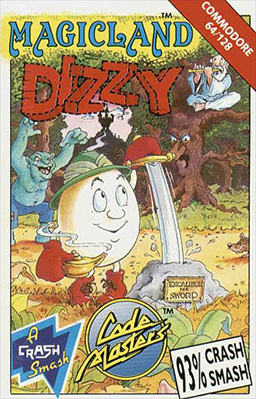
Magicland Dizzy is a platform adventure game published in Europe in 1990 by Codemasters for the ZX Spectrum, Commodore 64 and Amiga platforms. By 1992 there were also MS-DOS, Atari ST and Amstrad CPC versions available. It is the sixth game in the Dizzy series, and the fourth adventure-based Dizzy title. The story, set in a fantasy world called Magicland, follows on from the events of Fantasy World Dizzy, the previous adventure title. In Magicland Dizzy the player controls Dizzy, an egg-shaped character, who is trying to save six of his friends who have been placed under spells by the Evil Wizard Zaks.
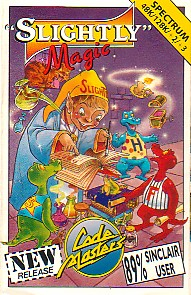
Slightly Magic is an action-adventure game published in 1991 by Codemasters for the Amiga, Amstrad CPC, Atari ST, Commodore 64 and ZX Spectrum. It was written by Colin Jones, author of Rock Star Ate My Hamster.

Cybernoid: The Fighting Machine is a shoot 'em up developed and published in 1988 by Hewson Consultants for the ZX Spectrum. It was ported to the Amstrad CPC, Atari ST, Commodore 64, Amiga, and Nintendo Entertainment System. It was programmed by Raffaele Cecco. The ZX Spectrum, Amstrad, and Atari ST versions have a main theme by Dave Rogers, while the Commodore C64 version has a different theme by Jeroen Tel.

Yogi's Great Escape is a platform game based on the 1987 movie of the same name. It was developed by British studio PAL Developments and published in 1990 by Hi-Tec Software as a budget game. It was released in Europe for Amiga, Amstrad CPC, Atari ST, Commodore 64, Atari 8-bit computers, and ZX Spectrum.
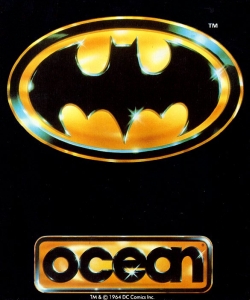
Batman is an action video game developed and published by Ocean Software based on the 1989 film of the same name. It was released on 11 September 1989 for the Commodore 64 and ZX Spectrum with Amiga, Amstrad CPC, Atari ST, MS-DOS and MSX versions following soon after.

Ace is a combat flight simulator video game published for the Commodore 64, VIC-20, and Plus/4 in 1985 by Cascade Games. It was ported to the Amstrad CPC, Amstrad PCW, Amiga, and ZX Spectrum.

Judge Dredd is a 1991 platform shoot 'em up video game based on the character of the same name. It was developed by Random Access and published by Virgin Mastertronic. It was released in Europe in 1991, for the Amiga, Atari ST, Commodore 64, and ZX Spectrum. Critics found the gameplay repetitive.
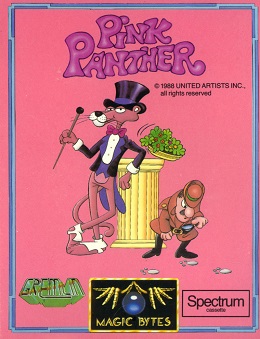
Pink Panther is a 1988 video game based on the character of the same name. It was developed by German company Magic Bytes and published by Gremlin Graphics. It was released in Europe for Amiga, Amstrad CPC, Atari ST, Commodore 64, and ZX Spectrum. Pink Panther was criticized for its control and difficulty, although the Amiga and Atari ST versions received praise for their graphics.




















